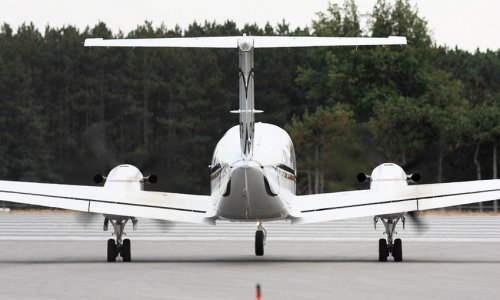Millau ViaductOn days when clouds form in the steep Tarn Valley in the south of France, the immensely high and remarkably slender concrete pylons – one of the seven is taller than the Eiffel Tower – are all that can be seen of the breathtaking Millau Viaduct from the surrounding hillsides.. The cable-stayed bridge, opened in 2004 to the designs of the French structural engineer Michel Virlogeaux and the British architect Norman Foster has streamlined long summer road journeys between Paris, Montpellier and the Spanish border. Where once traffic snarled to a halt in Millau, it now soars high above the town and river. Although the whole point of le Viaduc de Millau is to speed traffic across the Tarn Valley, it is a good idea to stop at the official viewing point and simply stare at this supremely elegant 21st Century bridge.Hohenzollern Bridge, CologneThe visual marriage the lofty Cologne Cathedral’s stone engineering and the bold steel structure of the Hohenzollern Bridge is testimony to the way in which the great railway buildings of the era before World War I were the ‘cathedrals’ of the industrial age. Completed in 1911, the 409m bridge crosses the Rhine. Blown up by German engineers in March 1945 in an attempt to slow the Allied advance on Berlin, today the rebuilt bridge is the busiest on Germany’s rail network. Touchingly, its monumental steel structure – rather like the hump backs of great whales rising from the river – is adorned, along the fence between the pedestrian sidewalk and the railway tracks, with thousands of ‘love padlocks’ celebrating the relationships of many of the thousands of people who use the bridge to cross the Rhine each day. Scarred by war, the bridge has been transformed into an unexpected symbol of unity and love. Designed originally by the architect Franz Heinrich Schwechten, it was not, however, the pure engineering structure we see today: then, it was adorned with towering castle or cathedral-like gateways. Intriguingly, Schwechten who began his career designing railway stations, and then the Hohenzollern Bridge, went on to produce a number of memorable churches later in his career. Railways and religion were a marriage made in stone, steel and Cologne.Forth Railway BridgeThe Forth Bridge is one of the wonders of the industrial age. A symbol of structural engineering at its innovative best, it appears on Scottish £20 notes and steals the scene in Alfred Hitchcock’s The 39 Steps (1935). Work began in 1882 to designs by John Fowler and Benjamin Baker on what was intended to be a highly visible improvement on the earlier Tay Bridge thatcollapsed in 1879 taking an express train and its passengers to a watery grave. The main body of the bridge comprises three gigantic, cage-like cantilevers rising from granite footings set 46m below in the unforgiving Firth of Forth. Completed in 1890, this was Britain’s first major steel bridge and, although it has required a full-time maintenance team to look after it, its value remains undimmed. ‘Like painting the Forth Bridge’ has long been a popular term describing a never-ending task. In 2011, however, work was completed on a £130 million ($223 million) repaint designed to last until 2050, while plans have been drawn up for a visitors’ centre offering a walk up those daunting steel cantilevers.SiMingYi ViaductThe 945km Jitong Railway through Inner Mongolia opened in 1995 at a time when the Chinese National Railways had a surplus of powerful, mainline steam locomotives built as late as 1988. Given that the Jitong Railway passed through coalfields, the decision was made to go with steam. Adventurous steam enthusiasts from around the world were amazed to find fleets of heavy freight trains working flat out over modern motorway-style concrete bridges. The best place to watch was by the Jingpeng Pass where the line twisted and climbed between desert and mountains over a sequence of bridges. The most dramatic of these was the curving SiMingYi Viaduct. I use the word “was” because although the viaduct is still very much in use, the steam locomotives that gave the Jitong Railway its special appeal went in 2005. For 10 years, though, this was a remarkable place, offering a marriage of new and old structures and technologies. The Jingpeng Pass and the SiMingYi Viaduct were adventures in every way.Pont du GardIn 1738, Jean-Jacques Rousseau, the Swiss philosopher, visited the Pont du Gard. “The echo of my footsteps under these immense vaults”, he wrote, “made me imagine that I head the strong voices of those who had built them. I felt myself lost like an insect in that immensity… and, I said to myself with a sigh, ‘Why was I not born a Roman?’” The sight of this imposing limestone aqueduct, with its three tiers of arches commanding the Gardon River between Uzes and Nimes in the south of France, is as impressive today as it was to Rousseau and has been ever since it was completed very nearly 2,000 years ago. A Unesco World Heritage site since 1985, the aqueduct was originally built to bring fresh spring water to the Roman colony of Nemausus [Nimes]. It stands 49m high and spans 275m, although it was once longer. The aqueduct fell out of use in the 6th Century, yet continued to serve as a bridge for hundreds of years. It was restored under the direction of the architect Charles Laisne between 1855 and 1858 for Napoleon III. Today, the aqueduct is one of France’s leading tourist attractions, although, a little sadly, none comes here either for the waters or to cross this heroic Roman bridge.Trift BridgeOne of the most exciting of all rope, or simple suspension, bridges is the Trift Bridge spanning Lake Triftsee in the Bernese Oberland used by thousands of walkers each year in search of the ever-shifting glory of the great Trift Glacier. The bridge spans 170m of nothingness 100m above the lake. For the intrepid, the views of lake, mountains and glacier are their own reward. The first bridge – opened in 2004 – swayed all too much, especially with winds of up to 200km/h sweeping through the valley, and was replaced five years later by the one you step across gingerly today. Designed by the Swiss architects firm Ingenieurbüro Hans Pfaffen, it boasts a tensioned ‘parabolic underspan’ – looking like a mirror of the structure above – that keeps sudden movements in check.Middlesborough Transporter BridgeThe River Tees interrupts the drive along the road from Middlesborough. Here, you join a queue to make what must surely be one of the world’s most extraordinary river crossings. This is the 259mMiddlesborough Transporter Bridge, carrying a gondola suspended from its high, skeletal structure that ferries up to nine cars and 200 people at a time some fifty metres above the river. It might not be fast, but it is an engineering delight and has been in service, pretty much flawlessly, since the day it opened in 1911. Designed and built by the Cleveland Bridge and Engineering Company, Darlington, the idea had been dictated by the fact that ships needs to pass unheeded along the Tees while the cost and practicality of building a conventional bridge high enough for them to do so was considered out of the question. You can still enjoy this remarkable ride today, in a car. Or, from the banks of the Tees, you can marvel for free at its spidery structure and at the sight of that heavily laden gondola gliding slowly above the great industrial river below.Golden Gate BridgeThis serene road bridge is, tragically, as notorious for the number of people who have jumped to their deaths from its high, slender frame as it is for its elegant engineering and its place in the heart of many Americans and fellow admirers from around the world. Like Sydney Harbour Bridge, the Golden Gate Bridge has long helped to shape and even define its host city over several generations. The dark side of the 2.7km bridge’s life is especially sad given the sheer joyous nature of its design. Its famous orange paintwork, the length of its principal span, the way it looks in Californian sunsets, in winter fog or on screen, makes it one of the best loved of all the world’s bridges. Subtly modified in recent years to cope with the impact of future earthquakes, the bridge was opened in 1937, its design led by the engineer and poet Joseph Strauss who had campaigned tirelessly for the project. Strauss was teamed up with the experienced bridge engineer Leon Moisseiff, architect Irving Morrow and project engineer, Charles Alton Ellis. With its elegant suspension structure and graceful Art Deco pylons, the Golden Gate Bridge, hugely popular from the start, is at once an emotional as well as a memorable and beautiful spatial and structural experience.(BBC)Bakudaily.az
Eight of the world’s most stunning bridges - PHOTO
World
11:00 | 08.07.2014

Eight of the world’s most stunning bridges - PHOTO
From ancient viaducts to modern-day masterpieces, architecture critic Jonathan Glancey chooses the most spectacular structures from around the globe.
Follow us !










